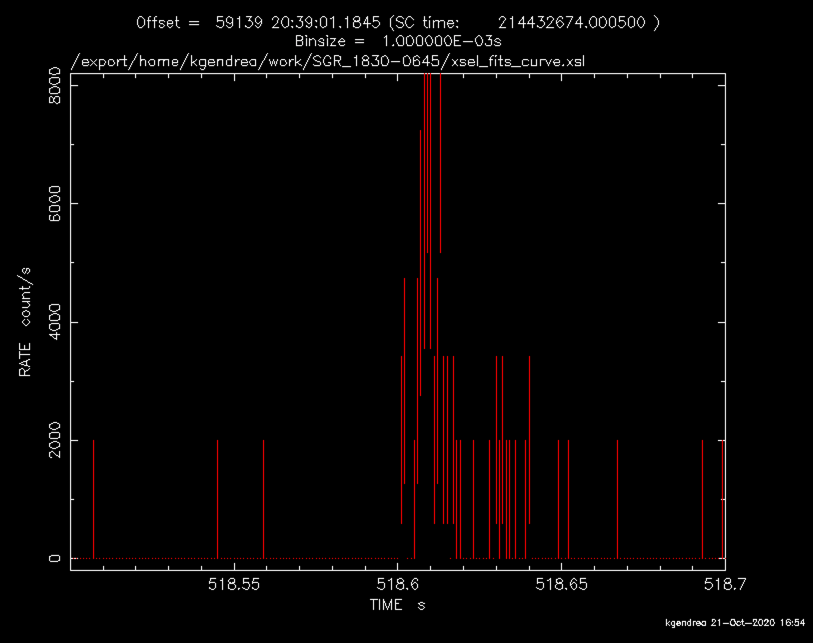NICER / ISS Science Nugget
for November 12, 2020
NICER confirmation of the magnetar nature of SGR 1830-0645: Spindown, spectra, and short bursts
NICER continues to observe the source SGR 1830-0645 in outburst. Recently, NICER confirmed that this source is indeed a magnetar, a highly magnetized neutron star. In addition to measuring the star's spin-down rate (how quickly its rotation rate is slowing), NICER has detected short bursts of X-ray emission, just a few milliseconds in duration (see figure). A pulsar's spin frequency and spin-down rate can be used to estimate its age and magnetic field strength - the spin frequency for SGR 1830 measured by NICER is 0.096008652(2) Hz (numbers in parentheses represent the 1-sigma measurement uncertainty) and its rate of decrease is -8.2 ± 1.4 × 10-14 Hz/s. The implied characteristic dipolar surface magnetic field at the equator is B = 3.1 × 1014 Gauss, and the characteristic spin-down luminosity (i.e., the spin kinetic energy loss rate) is 3.1 × 1032 erg/s. This large magnetic field certifies that SGR 1830-0645 is a magnetar. The short bursts that NICER has detected constitute additional confirming evidence of the magnetar identification. These results were reported in Astronomer's Telegram #14112 by Ray et al.

Figure: A close-up of measured X-ray intensity as a function of time during one of the short bursts from SGR 1830-0645. The bin size is 1 millisecond. Bursts of this duration are typical of magnetars and are caused by sudden releases of magnetic energy as magnetic field lines break and reconnect in the dynamic environment of the star's magnetosphere.
<< Previous
Main Index
Next >>